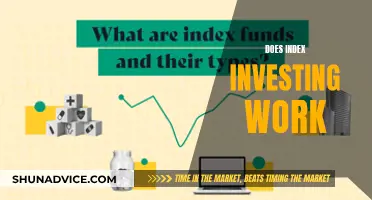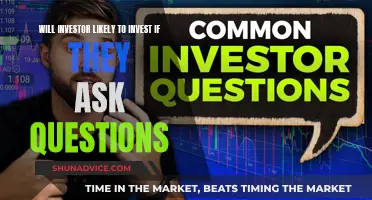
The buy and hold investing strategy has been labelled as dead or alive for years. While it has made many smart investors, including Warren Buffett, a lot of money, the consensus is that it is now unrealistic, impossible, or, at the very least, extremely difficult to implement.
The buy and hold strategy involves buying high-quality stocks at a reasonable price and holding them for a long time, if not forever. However, technological advances and increasing competition have disrupted this approach, with some stocks that were once considered excellent long-term investments causing disastrous losses for their shareholders in recent years.
Some commentators argue that the buy and hold strategy is not dead but has simply evolved, requiring investors to be more selective about the companies they choose to invest in for the long term. Others suggest that an in-between strategy that combines buy and hold with active security selection, such as allocation adjustments and tax management, may be more effective in the current market environment.
| Characteristics | Values |
|---|---|
| Status | Not dead but impossible or unrealistic according to some sources |
| Reasons for impossibility/unrealism | Emotional discipline required to stick to the strategy is difficult to achieve; technology is a disruptive force; increasing competition |
| Advantages | Saves time; avoids stress and mistakes; minimises cost of commissions and fees |
| Disadvantages | No guarantee of success; may result in significant losses; requires continuous monitoring of holdings |
What You'll Learn

Buy-and-hold is impossible
While the buy-and-hold investment strategy has its advantages, it is not without its flaws. In fact, some experts argue that it is an impossible strategy to implement.
The buy-and-hold strategy is a passive investment strategy where investors buy stocks or other securities and hold them for a long time, regardless of market fluctuations. The idea is to actively select investments but ignore short-term price movements and technical indicators.
However, the problem with this strategy is that it is based on the assumption that the market will always go up in the long run. This assumption was challenged during the financial crisis of 2008, when investors who stayed with their investments saw their portfolios get cut in half.
The buy-and-hold strategy also does not account for emotional discipline, which is necessary for investment success. It is difficult for investors to remain rational and not react to seeing their investments decline by a significant percentage.
Additionally, the strategy does not account for increasing competition and technological advances, which can cause even excellent buy-and-hold companies to cause disastrous losses to their shareholders. For example, many retailers have been pushed into a distressed situation due to the relentless growth of Amazon.
Furthermore, the buy-and-hold strategy does not allow investors to profit from market volatility. Sometimes, the best times to buy more shares occur during volatile periods in the market. However, if an investor is already fully invested in a buy-and-hold strategy, they may not have the capital to spend on these short-term buying opportunities.
Finally, the buy-and-hold strategy can result in a large opportunity cost. By tying up capital in a single asset or industry for a long period, investors may miss out on other investment opportunities.
In conclusion, while the buy-and-hold strategy has worked in the past, it is not a strategy that can be successfully implemented by most investors due to its inherent flaws and the emotional discipline required.
SIPs: Invest Now or Later?
You may want to see also

Technology is the enemy of buy-and-hold
The traditional buy-and-hold investment strategy has been challenged by technological advancements and increasing competition. While buying and holding stocks for decades has offered great advantages to investors, including saving time and minimizing costs, it has become increasingly difficult to implement successfully due to the dynamic nature of today's market.
Technological progress has enabled companies to grow at an unprecedented pace, disrupting entire industries and rendering former market leaders obsolete. For example, Amazon's relentless growth has pushed numerous retailers into distress, causing their stocks to plunge. This dynamic market environment demands active portfolio management and continuous monitoring of holdings to identify permanent deterioration in business models.
Additionally, the information economy has led to Big Tech corporations wielding immense power over people's lives, with access to personal information and control over speech and livelihoods. This power has been misused to censor, de-platform, and manipulate political discourse, as well as partner with authoritarian regimes for surveillance and military technologies.
The impact of technology on investing is further exacerbated by the emotional discipline required in buy-and-hold strategies. Investors find it challenging to remain rational and unemotional when witnessing significant portfolio losses, as seen during the 2008 financial crisis. The easy access to information and the ability to monitor investments in real time can trigger emotional reactions, leading to impulsive decisions that deviate from the buy-and-hold approach.
In conclusion, technology has indeed become an enemy of the buy-and-hold investing strategy. The rapid advancements and disruptions caused by technology demand active portfolio management and continuous monitoring, contrary to the passive nature of buy-and-hold. Additionally, the power wielded by Big Tech corporations and the emotional challenges posed by information accessibility further contribute to the difficulties of adhering to a buy-and-hold strategy in today's market environment.
Smart Ways to Invest $1,000
You may want to see also

Market timing vs buy-and-hold
Market timing and buy-and-hold are two schools of thought in investing that have been debated for decades. Each has its own advantages and disadvantages, and the effectiveness of each strategy depends on various factors, including age, risk tolerance, and market conditions.
Market timing is the ability to correctly predict the market's short-term major reversal points. It involves actively managing one's investments by buying before market bottoms and selling before market tops. While this strategy can potentially lead to higher returns, it is also risky and difficult to execute successfully. The challenge lies in the unpredictability of the market, and missing even one of the best trading days can significantly impact overall returns.
On the other hand, buy-and-hold is a long-term investment strategy where investors buy stocks and hold them for extended periods, regardless of market fluctuations. This approach requires discipline and a long-term perspective, as it may involve enduring market downturns without making impulsive decisions. The buy-and-hold strategy can save investors time and stress, as it does not require constant monitoring of holdings. Additionally, it minimises costs associated with frequent trading.
However, the buy-and-hold strategy has been criticised for being unrealistic and impossible to execute, especially during volatile market conditions. For example, during the financial crisis of 2008, investors who held on to their investments saw their portfolios significantly decline in value.
While market timing may provide more flexibility and the potential for higher returns, it also carries a higher level of risk. In contrast, buy-and-hold may be more suitable for long-term investors who are comfortable with riding out market fluctuations and have a higher tolerance for risk.
Ultimately, the decision between market timing and buy-and-hold depends on individual factors such as age, risk tolerance, and investment goals. For younger investors with a higher risk appetite, buy-and-hold may be a suitable strategy to capitalise on long-term market growth. On the other hand, individuals nearing retirement may prefer market timing to reduce the risk of significant losses that could impact their retirement plans.
In conclusion, both market timing and buy-and-hold strategies have their merits and drawbacks. Successful investing involves understanding these strategies, considering one's personal circumstances, and making informed decisions based on financial goals and risk tolerance.
Retirement and Beyond: Exploring the World of Alternative Investments
You may want to see also

The emotional discipline of buy-and-hold
Buy-and-hold investing is a strategy that involves purchasing high-quality stocks at a reasonable price and holding them for a long time, sometimes indefinitely. While this strategy has proven profitable for many smart investors, including Warren Buffett, it is not without its challenges and emotional demands.
The emotional rollercoaster
The financial crisis of 2008 is a prime example of the emotional rollercoaster that buy-and-hold investors experience. Those who stayed with their investments during this tumultuous period saw their portfolios take a significant hit, with some losing up to half of their value. It takes a considerable amount of emotional discipline to withstand such market downturns without making impulsive decisions.
Understanding the risks
The buy-and-hold strategy is not without its risks. Technological advancements and increasing competition can disrupt even the most established industries and companies. For example, new drilling techniques have impacted the oil business, and digital photography has significantly affected companies like Eastman Kodak. These technological shifts can erode profits and catch investors off guard, resulting in substantial losses.
The challenge of patience
Buy-and-hold investing requires a significant amount of patience. It demands that investors take a long-term view, sometimes holding stocks for decades. This approach can be challenging, as it goes against our instinct to react to market changes and seek immediate returns. It also requires investors to have faith in their chosen companies, even during periods of underperformance.
Dealing with uncertainty
The stock market is inherently unpredictable, and this uncertainty can be challenging to navigate for buy-and-hold investors. While historical data suggests that markets tend to recover from downturns, it can be emotionally taxing to witness significant losses in one's portfolio. It takes discipline to resist the urge to sell during these periods of uncertainty and trust in the long-term potential of one's investments.
Knowing when to let go
While buy-and-hold investing is about long-term commitment, it is also essential to recognise when it's time to let go. No company or industry is immune to technological disruption or market shifts. Therefore, investors must continuously monitor their holdings and be prepared to make changes when a company's business model or industry experiences permanent deterioration.
In conclusion, the buy-and-hold strategy demands emotional discipline from investors. It requires them to withstand market volatility, manage uncertainty, and balance patience with the recognition of permanent shifts. While this strategy may not be suitable for everyone, those who can master their emotions and maintain conviction during challenging periods may be rewarded in the long run.
Retirement Planning: Navigating the Intersection of Finance and Future
You may want to see also

Is buy-and-hold unrealistic?
The "buy-and-hold" investment strategy has been labelled as "dead" or alive and well over the years, depending on market performance. However, the problem may lie in the absolute nature of these labels, as some experts now suggest that buy-and-hold is unrealistic and impossible.
The buy-and-hold strategy involves purchasing high-quality stocks at reasonable prices and holding them for a long time, if not forever. This approach has created substantial wealth for many intelligent investors, including Warren Buffett. However, critics argue that technology and increasing competition are making it harder to implement this strategy successfully.
For example, technological advancements and disruptive innovations can significantly impact specific industries, rendering previously reliable investments less profitable. The oil industry, with the emergence of new drilling techniques and the market flooding with shale oil, is one such example.
Additionally, the emotional aspect of investing cannot be overlooked. The standard advice of "the market will be up in the long run" encourages buy-and-hold strategies for decades. However, this advice falls short when investors experience significant losses, as seen during the financial crisis of 2008, where portfolios were halved. It is unrealistic to expect investors to remain rational and unreactive in such situations.
Furthermore, the strategy has become challenging to implement due to the dynamic nature of today's markets. Stocks that were once considered excellent buy-and-hold options for decades have caused substantial losses to shareholders in recent years. While this strategy may have worked for a limited number of stocks in the past, there is no guarantee of perpetual success.
In conclusion, while the buy-and-hold strategy may not be entirely unrealistic, investors need to recognise its limitations and combine it with other approaches. A purely passive buy-and-hold strategy may not be feasible, and investors should consider incorporating active management techniques to adapt to market changes and mitigate risks.
Planning for Retirement Solo: Navigating Your Financial Future Independently
You may want to see also
Frequently asked questions
No, but it's not as simple as it used to be. Technology and competition are making it harder to implement this strategy, and emotional discipline is key to success.
It's a passive investment strategy where you buy securities and hold them for the long term, without trying to time the market.
It saves time and avoids the stress of regularly monitoring your holdings. It can also minimize the cost of commissions and fees, which can impact long-term returns. Historically, it has tended to outperform market timing.
It can be risky if the companies you invest in decline or become obsolete due to technological changes or competition. It can also be emotionally challenging to hold onto investments during market downturns.
It's important to carefully select the companies you invest in and continuously monitor your holdings to ensure their business model remains strong. Diversification and emotional discipline are also key to success.







